6 Popular Exercises That Totally Wreck Your Body
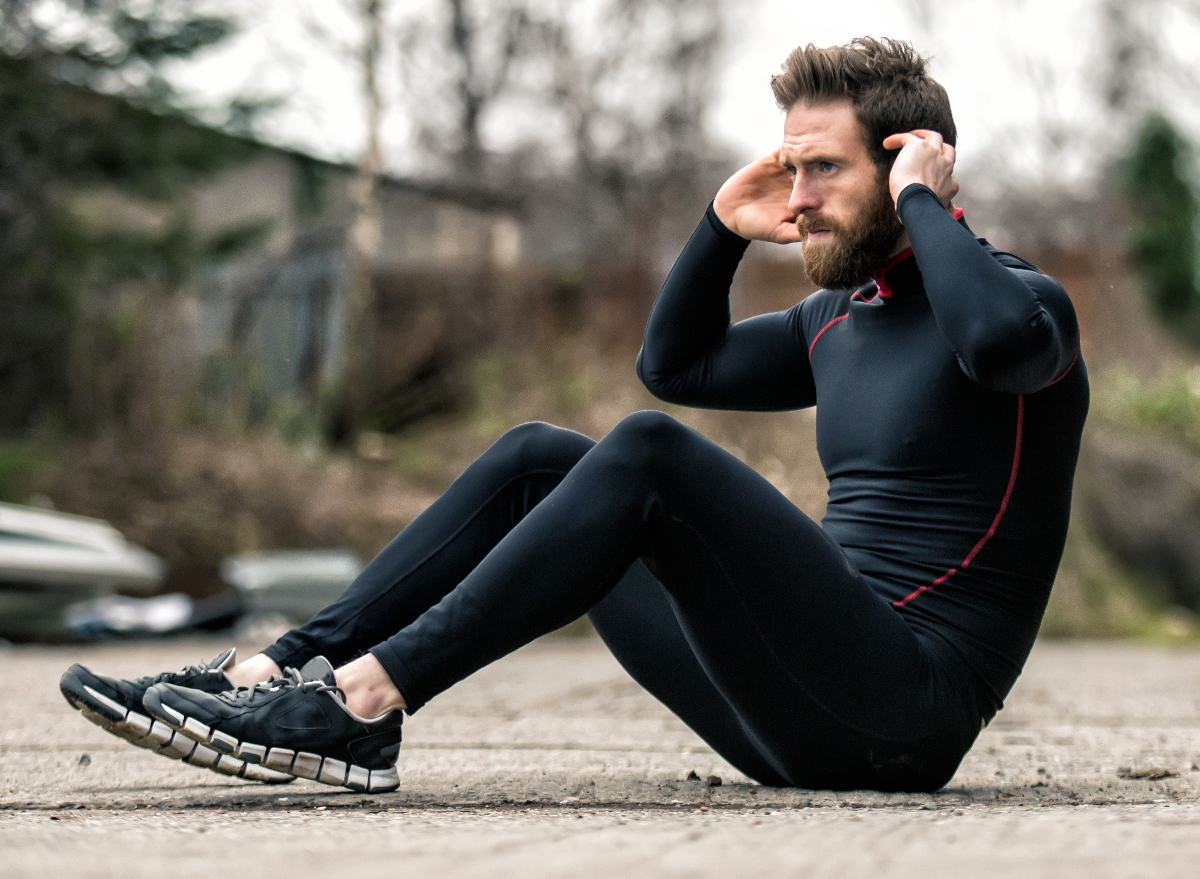
There’s no doubt about it: Getting up and active is good for your mind, body, and soul. Engaging in regular exercise can boost the health of your brain, help you manage or achieve a healthy weight, make your muscles and bones stronger, and lower your risk of disease, the Centers for Disease Control and Prevention (CDC) explains. Any amount of physical activity and less sedentary time is associated with at least some benefits. But when gearing up for your next workout, it’s crucial to know the best exercises for your body and the worst exercises to avoid. All exercises are not created equal, and you may be surprised to learn that there are some popular exercises out there that destroy your body.
We spoke with Tyler Read, the founder of PTPioneer.com and a personal trainer who’s been involved in health and fitness for the past 15 years, who breaks down exactly what exercises you should remove from your routine or avoid. Keep reading to learn about six popular exercises that can destroy your body. And next, don’t miss 5 Exercise Habits That Are Destroying Your Body After 50.
1. Sit-ups
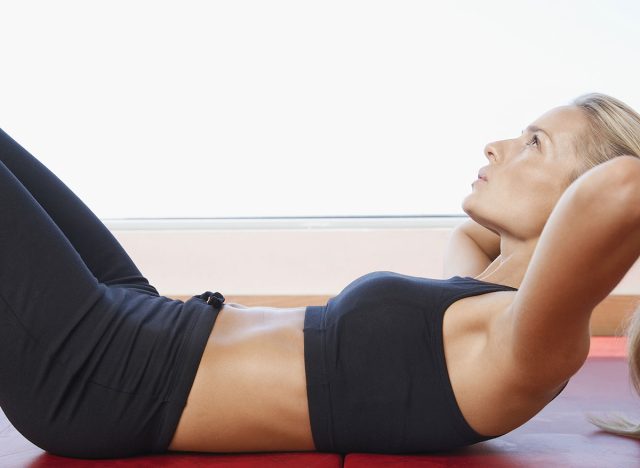
If sit-ups are part of your current fitness routine, it’s time to reevaluate. This exercise can potentially put a great amount of strain on your lower back, and Read informs us that it doesn’t really provide a lot of benefits at all.
Do planks instead.
Instead of sit-ups, Read explains, “Planks are a better alternative for core stability and strengthening.” You can perform a modified plank from your knees if that’s easier for you, or you can do a full forearm plank. In order to complete the forearm plank, you’ll assume a traditional pushup, and then lower your forearms to the ground so that your elbows are aligned with your shoulders, PureGym explains. Your core should remain tight as you remain in position.
2. Behind-the-Neck Lat Pulldowns
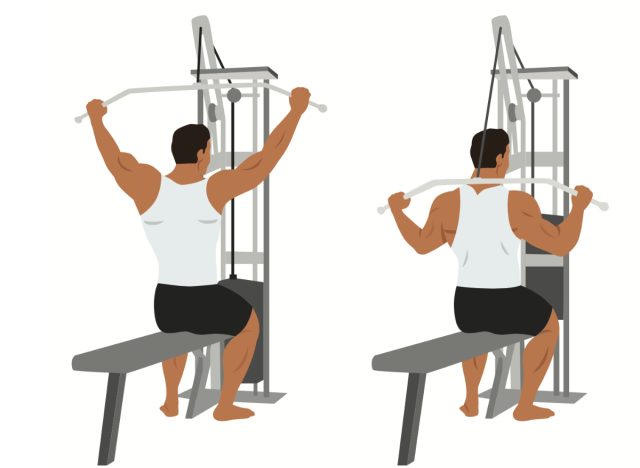
“Popular among old-school bodybuilders, this variation of lat pulldown compresses the neck joint in an unsafe way without much extra benefit and also places excess torque on the shoulder,” Read explains.
Do in-front-of-the-neck lat pulldowns instead.
As a safer alternative, stick to in-front-of-the-neck lat pulldowns. You’ll begin lat pulldowns by sitting and making sure your thighs are below the cushion. Stand up to take hold of the bar with an overhand grip so that your hands are placed shoulder-width distance apart, PureGym explains. Gradually lower back down to the seat as you hold onto the bar with straight arms. Press your elbows down as you pull the bar to the very top of your chest. This may require you to lean back just a bit. Keep the bar at the top of your chest before returning to the starting position.
3. Hack Squats
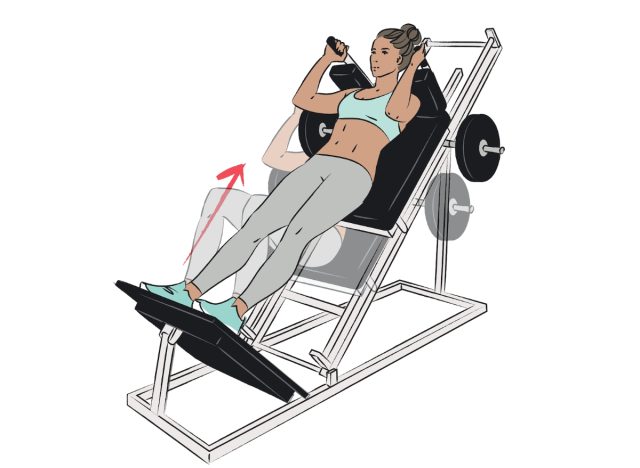
The hack squat involves getting into the proper position on the machine, taking hold of the side handles, and straightening out your legs before lowering yourself into a squat. “When performed improperly, hack squats place a sheer force on the knee that can be dangerous,” Read explains.
Do standard squats or lunges instead.
Instead of hack squats, stick to standard squats or lunges in order to strengthen your legs. By performing these exercises with just your body weight, you’re substantially lowering your risk of injury.
The bodyweight squat starts with you planting your feet either shoulder-width or hip-width distance on the floor, PureGym instructs. Bend both knees, and hinge your hips back as you descend into a squat. Keep your arms out straight in front or at the sides of your body. Once you reach the bottom, your thighs should form a parallel position with the ground. Press through both feet to come back up to standing.
4. Upright Rows
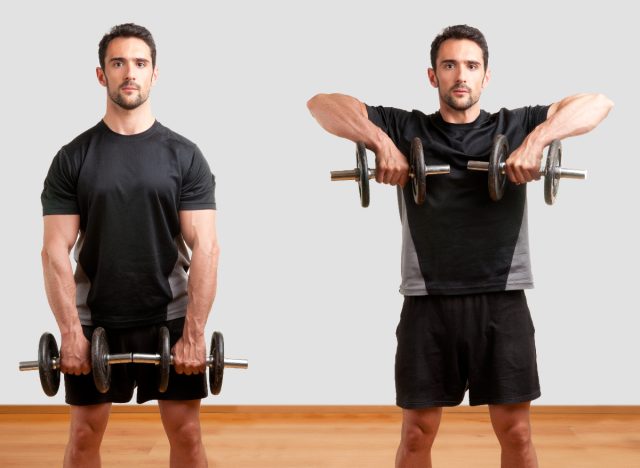
The upright row is another common exercise among the bodybuilding community, but it can seriously strain your shoulders without offering any advantages.
Do bent-over rows or lateral raises instead.
Safer options include a bent-over row or lateral raise. In order to perform a dumbbell bent-over row, you’ll grab the dumbbells with both palms facing each other. Press the hips back so that you’re slightly leaning forward. Both arms should hang down straight with the weights by your shins, PureGym explains. Inhale, activate your abs, and bring your elbows back in order to pull the weights up to your hips. Gradually bring the weights back down before rowing them up for the next rep.
5. Box Jumps
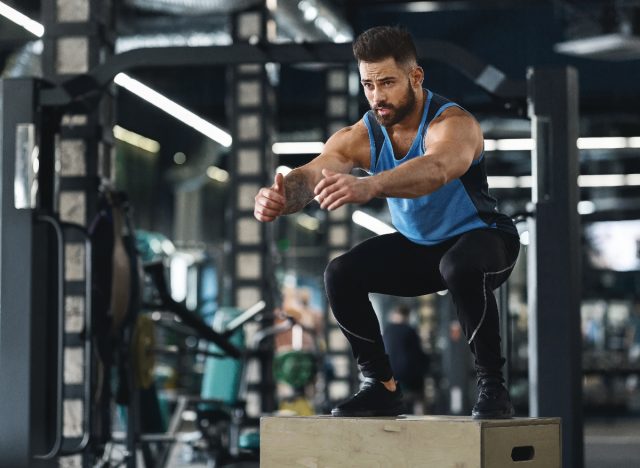
The box jump can be safe when performed correctly, but when not, this exercise can put you at risk of suffering from a knee injury. “Due to the speed involved, the forces are higher and there is less ability to correct mid-rep [when] compared to regular squats,” Read explains.
6. Kipping Pull-ups
“Used in CrossFit due to the ability to perform faster ‘pull-ups’ that are legal per CrossFit standards, kipping pull-ups are very risky on the shoulders and really do not do much in the way of functional back strength,” Read tells us.
Do regular pull-ups or lat pulldowns instead.
Instead of kipping pull-ups, focus on regular pull-ups or lat pulldowns. The pull-up is by no means a simple bodyweight exercise, as it calls for solid bicep, back, and core strength, PureGym explains. You’ll begin the movement by placing both hands a bit outside the distance of your shoulder span. Hang onto the bar with both arms fully extended. Then, think of lowering both elbows down and behind your body as you pull yourself up toward the bar. Your chin should come above the bar to reach the top of the motion. Gradually straighten both arms in order to lower yourself back down to the position you started in.









